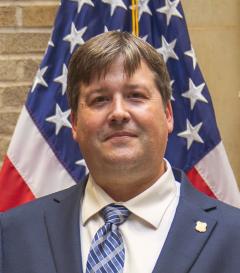Updates to wildfire risk tool advance understanding of wildfire vulnerabilities nationwide
Today, Headwaters Economics, in partnership with the USDA Forest Service and Pyrologix, LLC, announced updates to the Wildfire Risk to Communities tool. These updates mark a significant advancement in the understanding of wildfire vulnerabilities to communities nationwide, showing that more than 115 million people—more than one-third of the U.S. population—live in counties with high wildfire risk. And with more than 48 million buildings (about one-third of all structures) in high-risk counties, the new data demonstrate the urgent need to reduce risk to thousands of communities vulnerable to wildfire.
The updated tools display how wildfire risk disproportionately impacts certain communities. For example, when accounting for recent climatic trends, more than 60% of counties in Washington and Oregon now have high wildfire risk, up from 47% in previous models. In tribal areas, nearly three out of four people live in places with high risk. And almost one in five places with high wildfire risk also have a greater percentage of people over the age of 65. Nearly 20% of places with high wildfire risk also have a large number of mobile homes, potentially putting a significant portion of the nation’s affordable housing stock and the people who live in them at much higher risk.
The bottom line is that this update tells us the nation’s wildfire crisis has the potential to impact more people than we originally thought. With more than a third of the population living in areas of high wildfire risk, the importance of working together, especially in areas with the most vulnerable populations, has never been greater. And the success we’ve shown in reducing risks by making focused investments the landscapes outlined in our "Wildfire Crisis Strategy" has never been more vital. In addition, the new resources and data available through the Wildfire Risk to Communities tool underscore the need for individuals, organizations, and governments at all levels to get involved in addressing the crisis.
This first major update since the launch of the tool significantly advances understanding of wildfire vulnerabilities nationwide. It provides new methods and data that better capture wildfire risk to homes. It adds a “Risk Reduction Zone” page to help communities see what types of mitigation activities will be most effective in different locations. It also connects communities to resources to enable them to take action to reduce risk and includes a new section on grants and funding opportunities.
The Forest Service is using the Wildfire Risk to Communities tool to implement meaningful and needed change to communities at the highest risk from wildfire. Programs like the Community Wildfire Defense Grants and other wildfire-related grants provide funding to vulnerable communities to plan for and mitigate risks of wildfire locally. It is likely that more communities will be eligible to apply for the third round of CWDG funding, which we expect to announce later this year. Our continued work with state, local and tribal governments in development of potential operational delineations, investments in keystone agreements, and other projects that focus on cross-boundary work add to the countless ways we are showing up in service to these communities.
First established in 2020, https://wildfirerisk.org is a vital resource for community planners, researchers, journalists and policymakers seeking essential data and solutions about wildfire threats to communities. Fire ecologists and analysts at the Forest Service have worked on this tool with Headwaters Economics and Pyrologix since 2018 when Congress directed the Forest Service to create it through the 2018 Consolidated Appropriations Act.
This incredibly accessible tool would not be possible without the effort of our employees in Fire and Aviation Management, Research and Development, and our partners at Headwaters Economics and Pyrologix. Their work in making this tool that not only uses the latest data but also provides resources for communities to manage and mitigate risk is exemplary. Together we will continue to use every tool available in risk reduction and equitably help communities prepare for wildfires.
Editor's Note: Provide feedback about this column, submit questions or suggest topics for future columns through the FS-Employee Feedback inbox.

